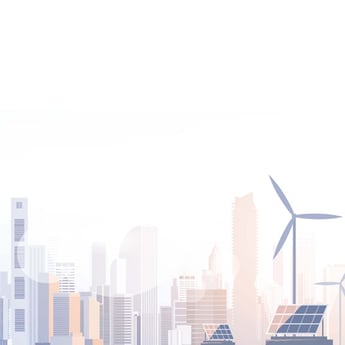Sustainable innovation starts with maximising what you have

GVA’s Rupert Elphick reflects on learnings from UKGBC’s Innovation Roundtable in Bristol.
Meeting up with fellow sustainability peers is always an inspiring occasion, and having recently attended the Bristol launch of the new Sustainable Innovation Manual by the UK Green Building Council, I returned to the office full of motivation, keen to communicate with my colleagues about how we at GVA can continue to have an impact and facilitate sustainable change.
Of course, as you would expect, the word innovation was spoken a lot throughout the event. Everyone has their own take on what the word implies. For me, it isn’t just about new building materials or construction techniques, but importantly it’s about the operational use of space, and how we can maximise what we already have.
It’s in this area that we at GVA can have a huge impact, since as property consultants we often have a role in a project from inception through to material realisation, as well as running it operationally. So our own challenge is to look carefully as to how we can work with our clients to build and develop even more sustainably, and operate a building to its maximum capacity.
It’s clear that from the inception of a project, a diverse team including sustainability professionals is required to assist in developing innovative designs. The team can also understand from contractors their role in pushing innovation.
Legislation however, only goes so far – as Tunde Agoro at Hoare Lea said during the roundtable, legislation is not the decisive factor as it only sets the bare minimum. It is up to the industry to strive to go above and beyond.
Here in Bristol, we have a great example of how a development goes above and beyond. At the award winning Finzel’s Reach, Alex Roberts at Wilmott Dixon said, “if the client asks for it, we can deliver it. We need to develop relationships and build trust with our customers to allow us to innovate and develop a more sustainable built environment.” Aurora at Finzel’s Reach is Bristol’s first BREEAM Outstanding commercial office, and the only office in the city to meet and exceed the BCO design guide criteria.
Of course, innovation in sustainability can be influenced or facilitated in many ways. People may not immediately think of a lease! But in fact, lease principles are key to innovating during a building’s operational lifecycle. Alienation clauses are generally restrictive and a key point that arose from the roundtable’s discussions for me was how we can incorporate clauses into a lease to permit a tenant to sub-let underutilised space. This could be to co-working operators, charities or agencies that can pay them in work instead of capital, so creating a sustainable community workspace and maximising the whole floor area.
It has been reported that a typical working day sees office space under-utilised by a staggering 30-40%. In our expanding population this is going to become ever more prevalent, and not just in offices. Retail ancillary spaces are rarely entirely utilised with upper floors vacant, that could otherwise be occupied.
At GVA, we work a lot on the sale of vacant properties and we already partner with live-in Guardians who convert buildings to provide residential space on a short-term basis. They require certain criteria to be in place that often buildings don’t meet, so opportunities can be limited. Steve Sliney at Collect Eco, however, works with local charities who seek out short-term storage space within commercial properties that could meet a wider criteria, and offer a chance to maximise the use of a property during a change in circumstances i.e. marketing or seeking planning permission.
Including innovative sustainability measures into the lifecycle of a building may be seen by some to be a risk, but it’s a risk well worth taking. Look closely at the benefits and they are there to be embraced for a better future for us all.
